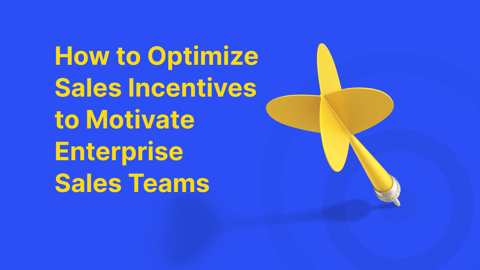As we start to emerge from the ashes of the global pandemic, the waves of change continue to have a ripple effect across the world of work. This is especially prevalent when it comes to employee retention. The surge of people leaving their jobs has a name - the employee turnover tsunami. This isn’t just anecdotal hearsay either. Research from Eagle Hill Consulting found that one in four employees has plans to leave their current job once the dust has settled post-Covid. And according to the same survey that had 1000 participants, this figure jumps up further to one in three for those who have young children who have been home taught for around a year. And that is the same number for child-free millennials as well.
This blog looks at the key issues and indicators that have led to this level of people leaving their jobs, and what businesses can do to weatherproof themselves from a spike in desertion. From burnout to a fresh perspective on work-life via the issue of old grievances rising to the surface, you can read about the main causes and proposed solutions (including comparative benchmarking techniques and software) to turn back the tide of stampeding colleagues heading toward the emergency exit doors.
Reasons for Employee Turnover
1. The Price of Employee Burnout
Let’s not argue about this, post-pandemic burnout is a “thing”. According to Human Resource Executive, the pandemic has raised stress levels to an all-time high, thanks to uncertainty, the disconnect of working remotely, and lack of HR support and advocacy. The other causes of burnout, according to the Eagle Hill report, have been the huge effort of trying to educate children alongside the job duties, and unregulated and demanding workloads.
2. The Prospect of Change
Employee turnover isn’t just the result of uncertainty and unforeseen circumstances. In the Eagle Hill report, there is mention of the three “R’s”; reflect, reassess, and recalibrate. Many people have used furlough or remote working as a time and space to think about where they want to go next in terms of careers and lifegoals. For those in sales, the normal routines of physically visiting clients and leads in territories have been entirely removed, so there is of course a question mark whether they want to return to this or find an alternative path.
3. The Sense of Disconnect
The pandemic has given rise to many people questioning their work purpose, and a growing feeling of disengagement. In a recent study taken out by the Achievers Workforce Institute, an employee recognition software company in Toronto, one of the most telling statistics was that 46 percent of the 2000 respondents surveyed felt that their connection to their company had significantly lessened, and 42 percent stated that company culture had declined. Just 21 percent said they are very engaged at work. With so few opportunities for colleagues to physically come together and discuss their activities, it’s much harder to keep the sense of company ethos and daily enthusiasm going.
4. The Rise of Career Opportunities
As we reach what looks like shallower waters, thanks to the rollout of vaccines and the gradual drop in numbers getting COVID, the last thing we’d reasonably expect is to be caught in a tidal wave of change, but this is exactly the time when employee turnover is expected to reach its acme. So many people working in sales have put thoughts of leaving a position on hold in favor of security, but suddenly those previous irksome issues (poor territory allocation strategy, unsatisfactory and unfair compensation plans, lack of coaching) are drowning out any of the positives, which is why solutions to stem the turnover tsunami are needed right now.
Halting the Wave of Employee Turnover
There’s no “one size fits all” solution, but we’ve identified the critical pointers and insight that can help you stem the employee turnover tsunami.
- Deliver a Strategy for the New Normal: Few businesses will return to doing things in the same way as pre-pandemic. By taking a long hard look at your strategy through new eyes, you can determine fresh objectives and KPIs, as well as the people needed to fulfill these ambitions. Supply chain, demand, and the channels we sell on have shifted, so your strategy needs to reflect this. And look at what your competitors are doing. The benefits of benchmarking starts here.
- Face Forward Toward the Tide: Once the force of the tsunami has done its worst, there’s little point in turning your back to the sea changes that lie ahead. If people are leaving, don’t assume that backfilling is the answer. Be proactive when it comes to change and explore what new roles could be created to meet the change in business needs, and what new skills and coaching can be given to your existing teams.
- Take a Creative Approach to Redeployment: One way of keeping wavering staff on the right side of resignation is considering what new role they could fill, determine where they may have been overburdened in the past, and dig into the hidden skills pool that may not have surfaced previously. It’s more cost-effective to move staff around from within than having to go through a lengthy and expensive hiring process.
- Keep Your High-fliers Satisfied: Never stop nurturing your MVPs. This period of uncertainty has given even the most loyal salespeople time to wonder what the future holds. Through benchmarking, you’ll continue to have your finger on the pulse of what matters to them. Coaching, training, internal secondments, and compensation reviews are just a few of the things that can maintain a motivated, engaged team, and of course, make sure they are equipped with the tools and software to do their job to the best of their ability, wherever they may be.
- Always Listen to Your Employees: It’s easy when a member of your team talks about an issue to say, “I hear you”, but this is the time to act and respond. Working away from the office environment has meant that face-to-face reviews are now via video link, which can create a less than authentic atmosphere for meetings. Employee surveys, informal catchups such as “virtual coffees” and distance support and counseling can ensure your team genuinely feels heard and cared for.
- Immerse Everyone in Company Culture: That remote working thing strikes again. As we touched upon earlier, If you’re used to working in an office where there are value posters, branding materials, and regular team away days, that lack of togetherness can quickly erode any sense of belonging. Reminders of being part of something bigger are essential, but that means more than getting the gang together on Teams to sing the company song. Make it count with well-being programs and mental health check-ins. Just to re-iterate, nobody is expecting you to reinvent the wheel; robust comparative benchmarking can expose how other companies are addressing these issues.
The Importance of Benchmarking
We’ve touched on this a couple of times, but let’s provide some context within the employee turnover conversation. Benchmarking is a bit of a secret password that not enough companies understand, or utter, but we recommend you start believing in its power as soon as possible. For all the solutions we’ve offered in this article, benchmarking can be applied. That is harnessing data to measure various factors against competitors. In the case of stemming employee turnover or even redeployment, it’s a sure-fire method to identify what is working for your sales division, and what needs to be changed or even “chopped”. Benchmarking is evidential, so it's hard to argue against as well.
At our recent virtual Varicent Spring Summit, our key speakers officially announced the new benchmarking app from Varicent. Created in partnership with The Alexander Group, it focuses on data and metrics in three key areas – growth, efficiency, and attainment. Using our existing Symon.AI software to power the data, this benchmarking app promises to be a gamechanger across the post-pandemic working landscape.
Find out more about the power of Symon.AI here, and connect with our team to learn more by booking a demo.




